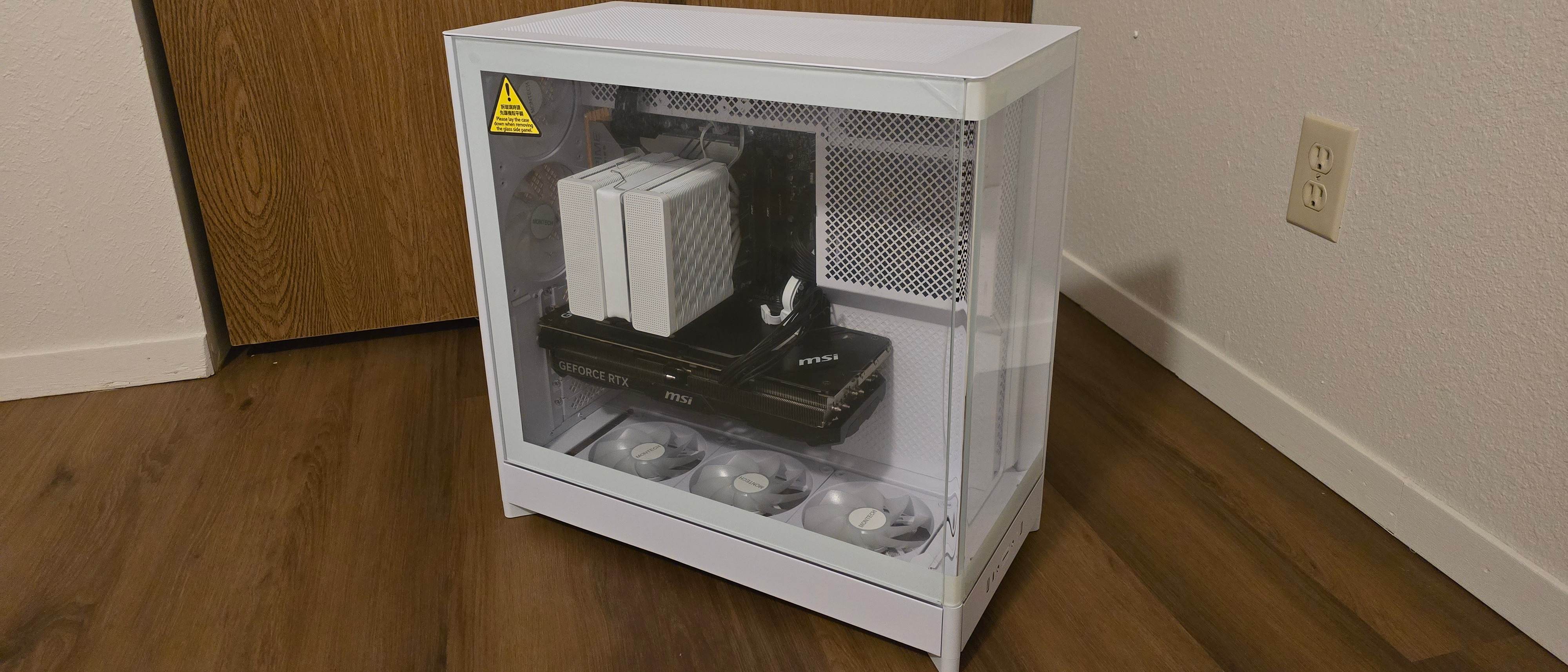Why you can trust Tom's Hardware
Maximum Noise Levels
In terms of maximum volume, the noise levels of Montech’s XR Wood can reach up to 47.2 dBA, on the higher end of the chart. One thing my charts can’t show you well, however, is the pitch of the fans, which isn’t particularly annoying (at least to me), so I would say that the noise doesn’t “feel” as loud as the dBA measurements would indicate. But your ears may give you a different opinion.
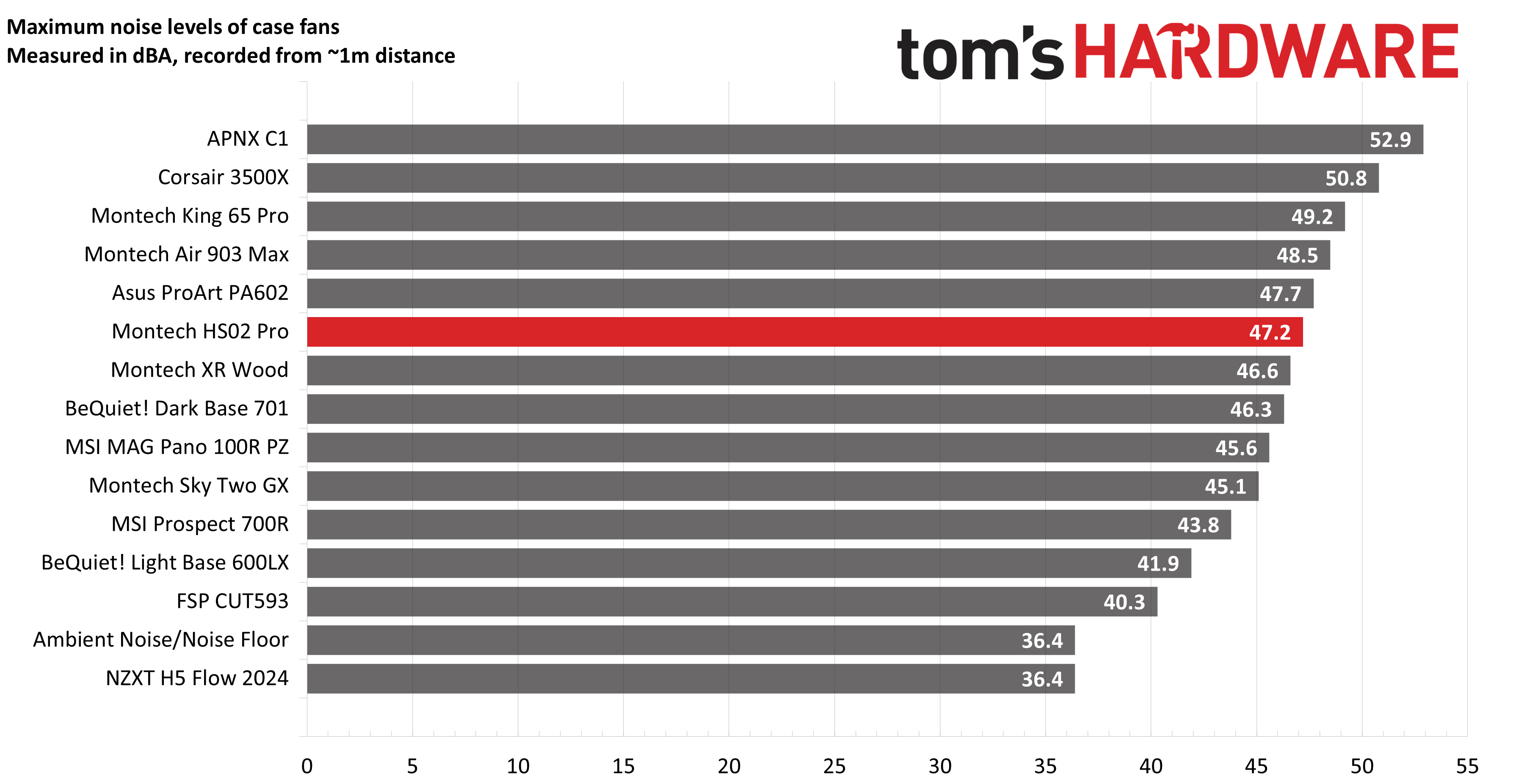
Maximum thermal performance – pre-installed fans noise-normalized to 38.9 dBA
This set of tests is designed to appeal to those who love quietly running PCs, with both system fans and the CPU fan noise normalized to 38.9 dBA. Consider this a measure of the case’s thermal efficiency when set to low noise levels using the pre-installed fans. As we’ve just updated our testing methodology, our first comparisons only feature four cases in total, but this will grow as we have time to test additional products.
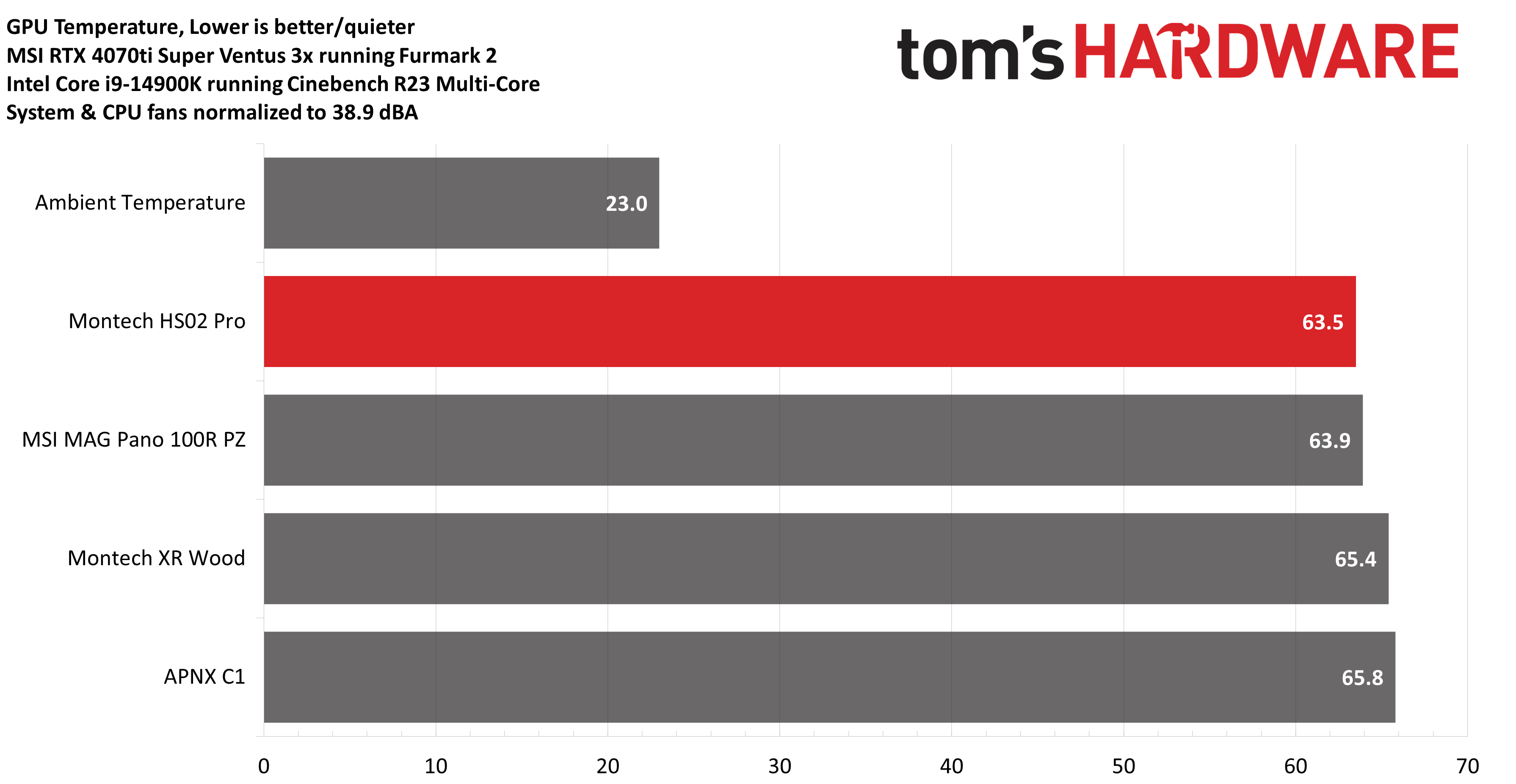
As the design of this case is focused on providing the best thermal performance for your GPU, we’ll start by looking at graphics card-focused benchmarks. Montech’s HS02 Pro shows the best results we have out of the four cases we tested.
Now let’s take a look at the GPU’s performance in this test another way: the speed of the GPU’s fans. This is important because the slower the fans are running, generally, the quieter and more silent they operate. Running at only 1383 RPMs, Montech’s HS02 Pro results in our GPU running at the quietest speeds of any case tested here.
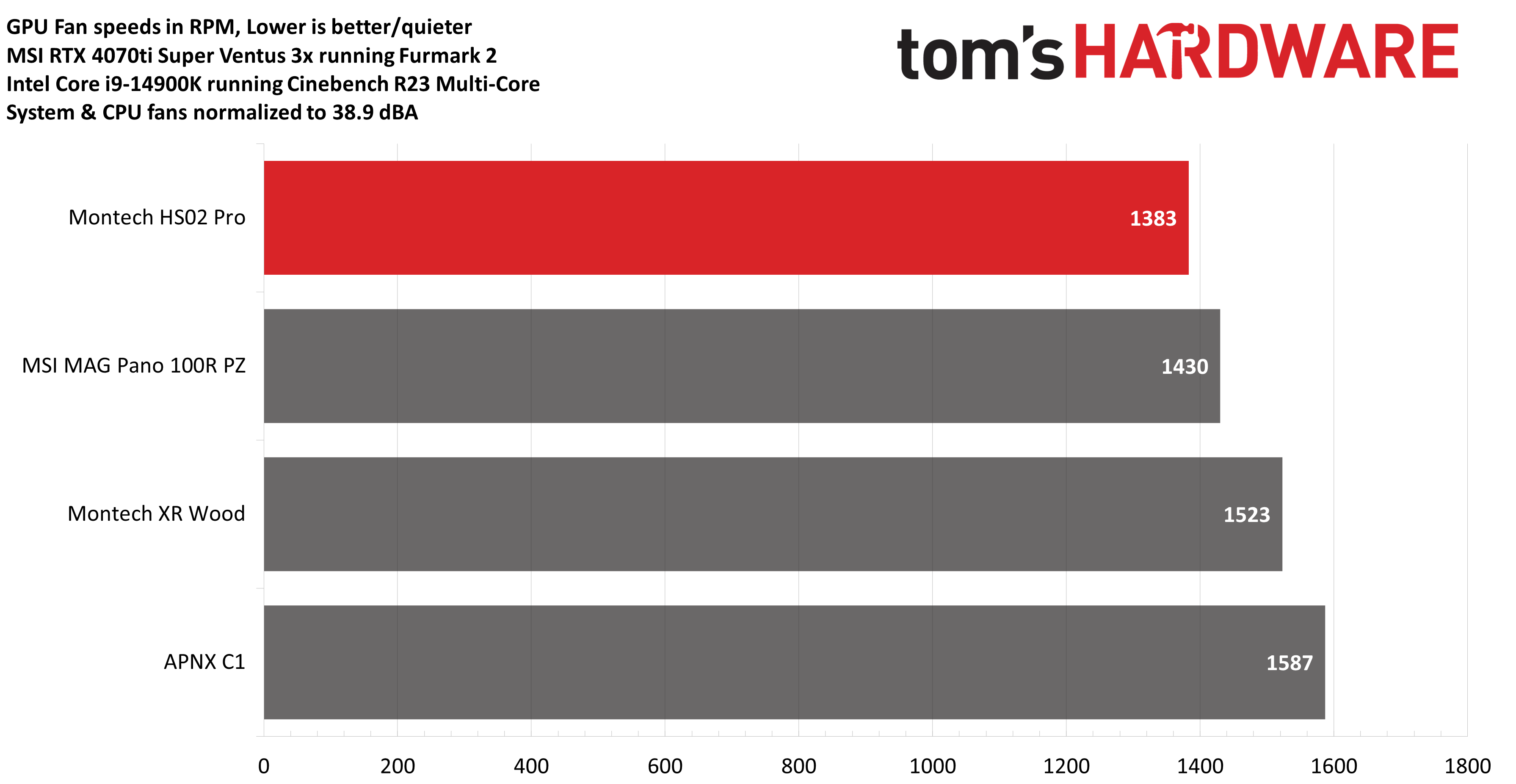
The next two charts cover CPU thermal performance, and you might look at this chart and think the HS02’s performance is underwhelming – after all, it is at the bottom of our charts!
But that’s kind of missing the point of this case, which is to keep your GPU running as cool and quietly as possible – an especially important feature if you’re using a power-hungry GPU like Nvidia’s RTX 5080 or stronger.
Another point to consider is that my testing is performed with an air cooler, but most users looking at this case will likely be considering liquid-cooled AIOs, which won’t need as much case airflow to be effective.
Get Tom's Hardware's best news and in-depth reviews, straight to your inbox.
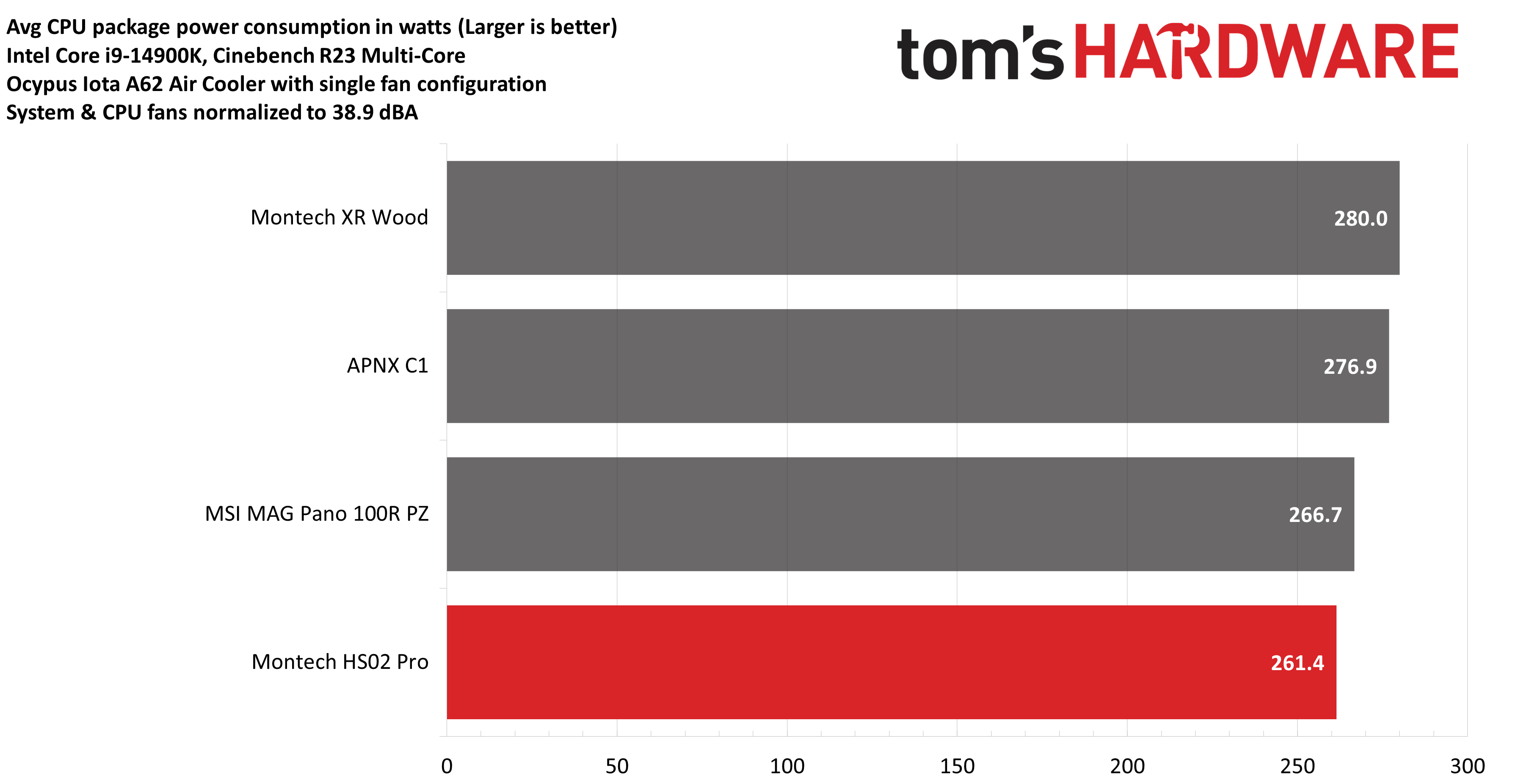
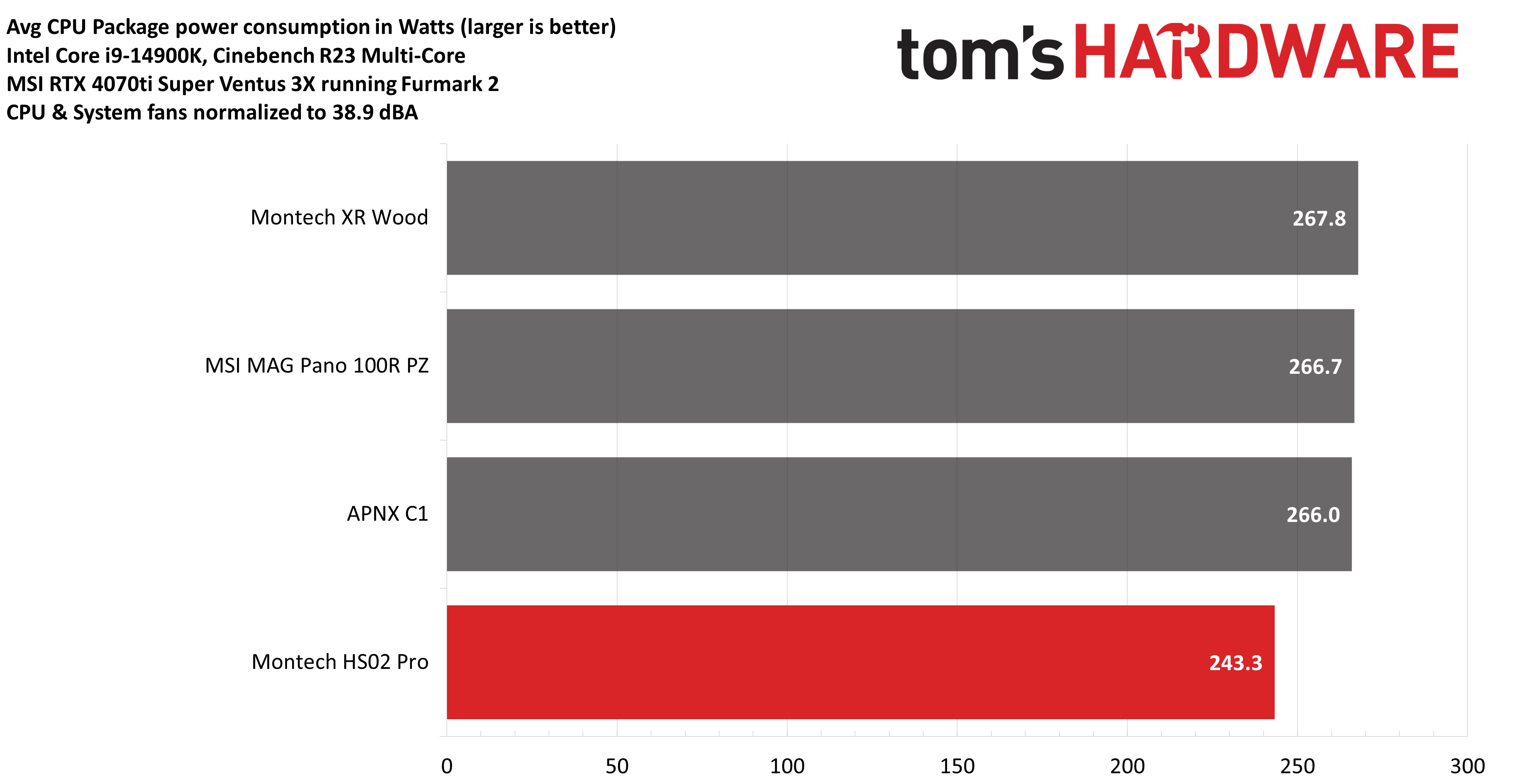
Maximum thermal performance – pre-installed fans at full speed
As with our previous set of benchmarks, we’re going to focus on GPU temperatures, as that is what this case is designed for.
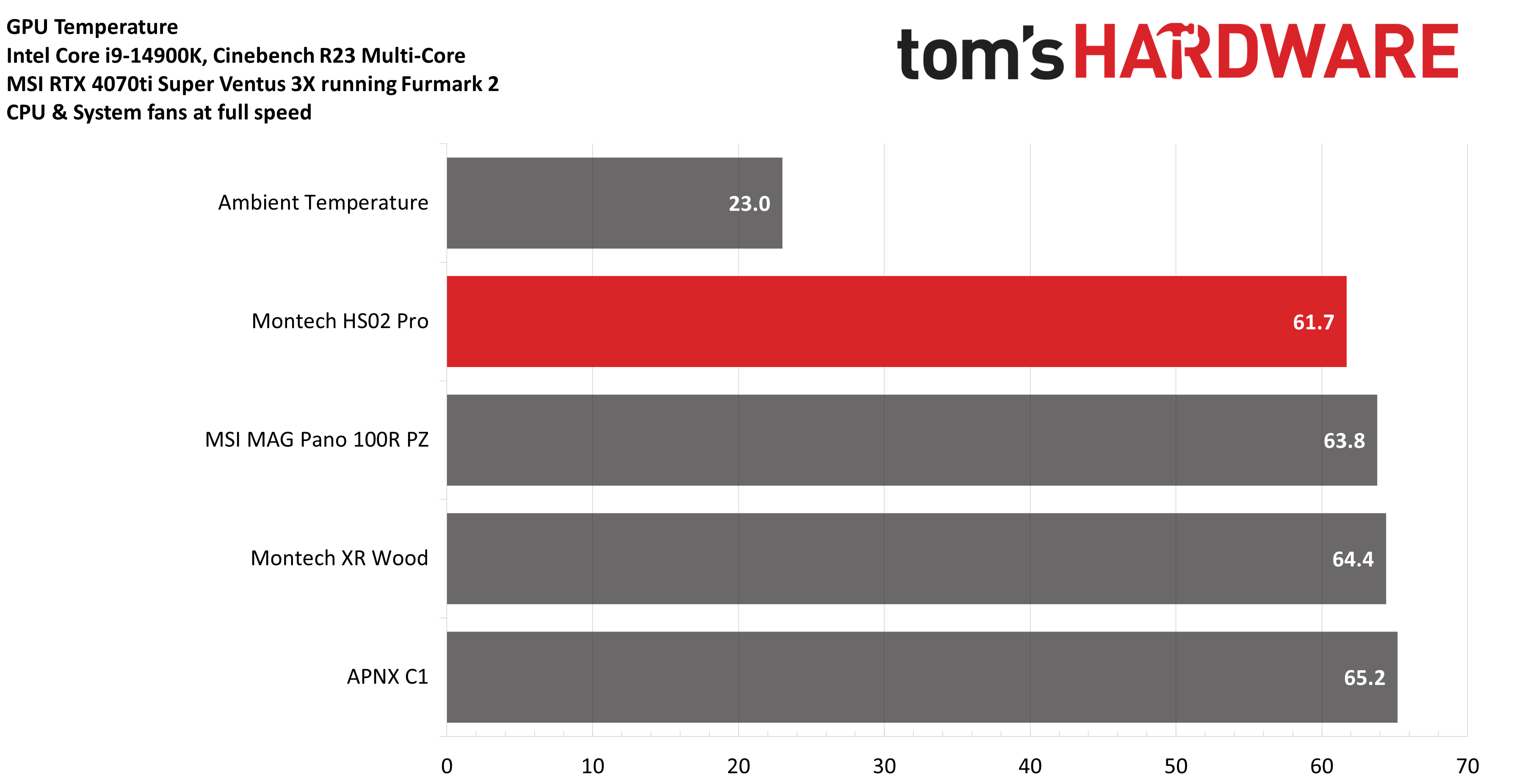
As with our noise-normalized tests, Montech’s HS02 Pro takes the lead for the best GPU thermals out of the cases tested for this review.
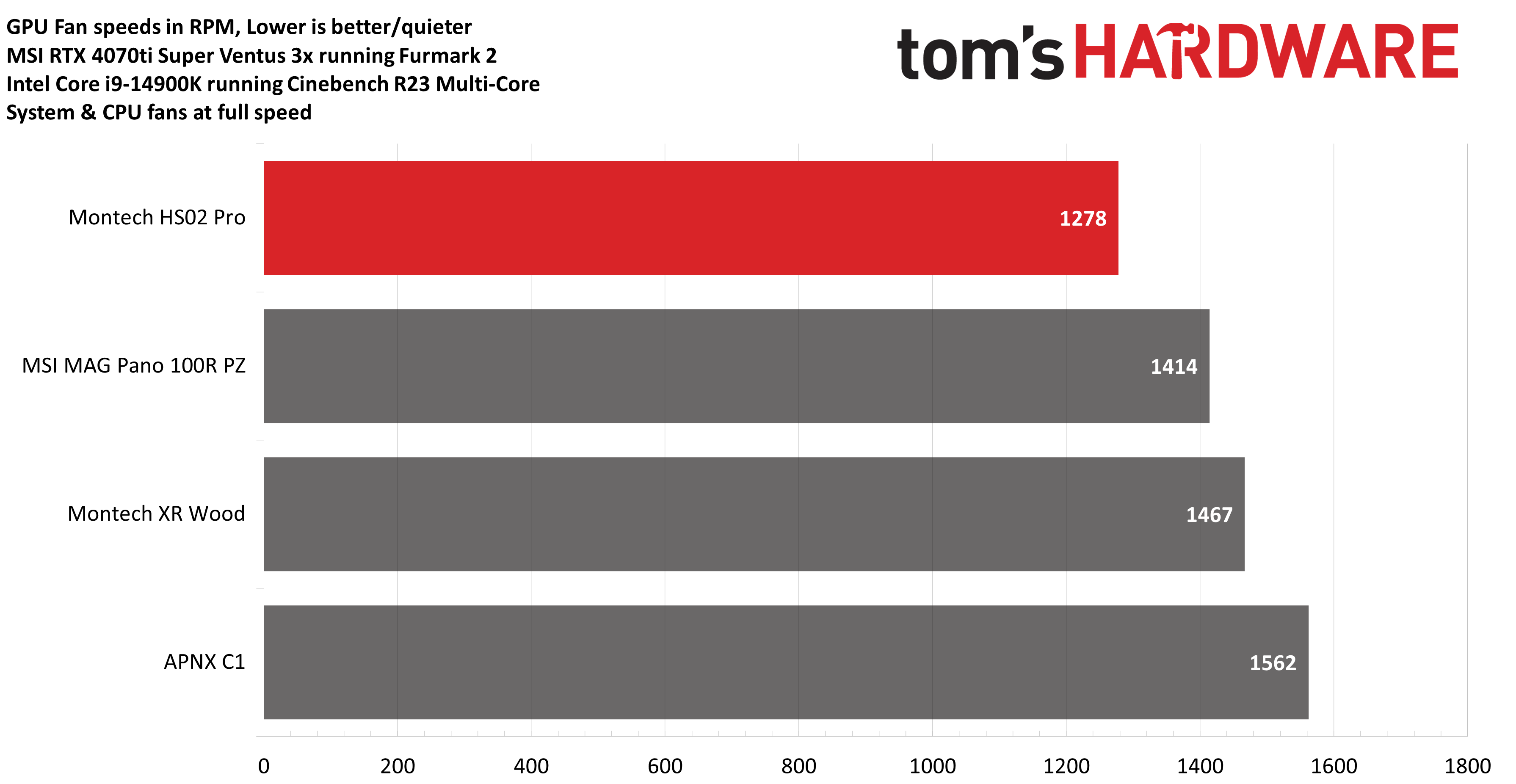
Those lowered temps result in lower running GPU fan speeds. As a point of comparison, the GPU’s fans run over 20% faster in the APNX C1 case!
Below I’ve included CPU benchmarks, which again aren’t the greatest in comparison to competitors. Users who might find this concerning would be advised to install an AIO instead of an air cooler.
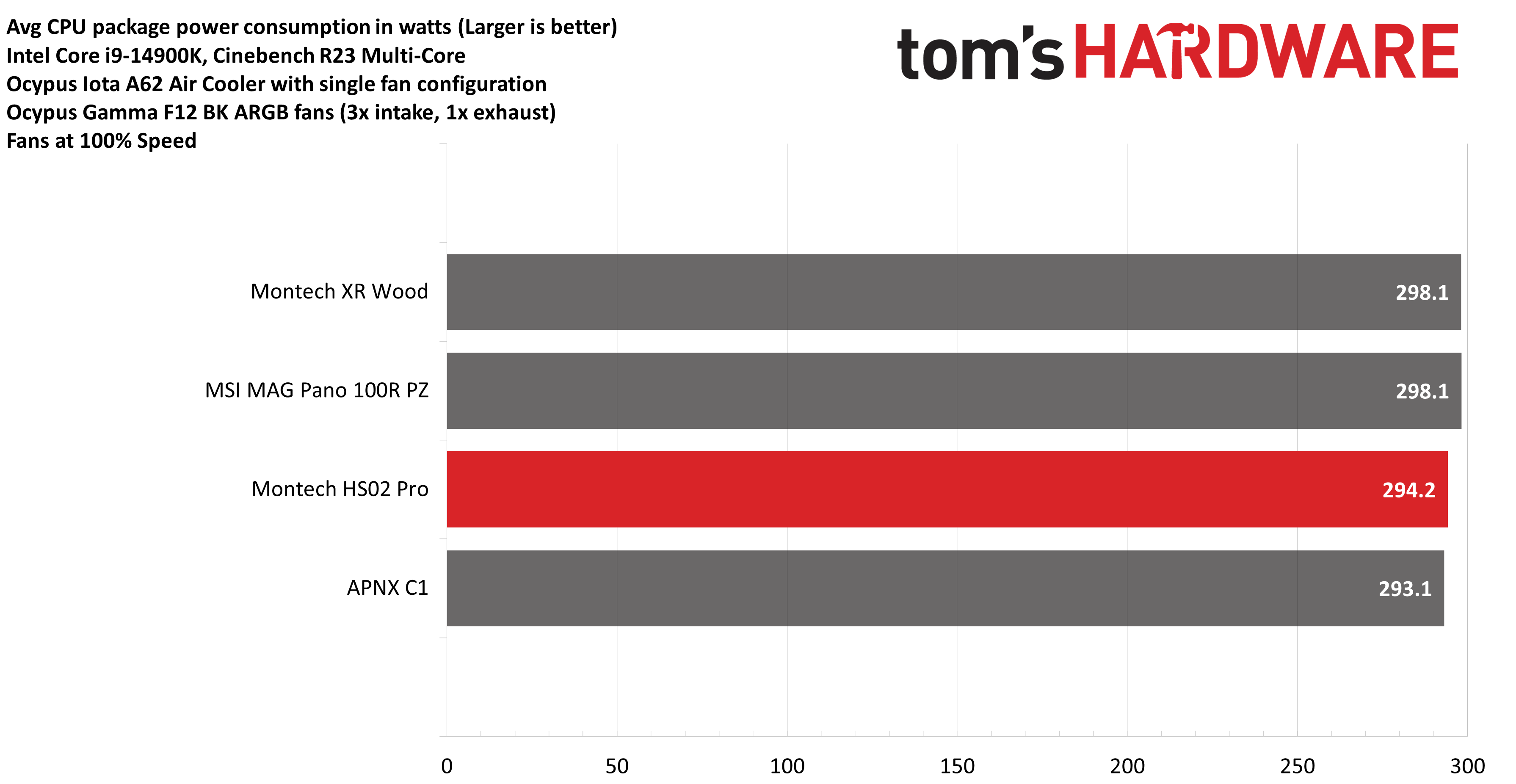
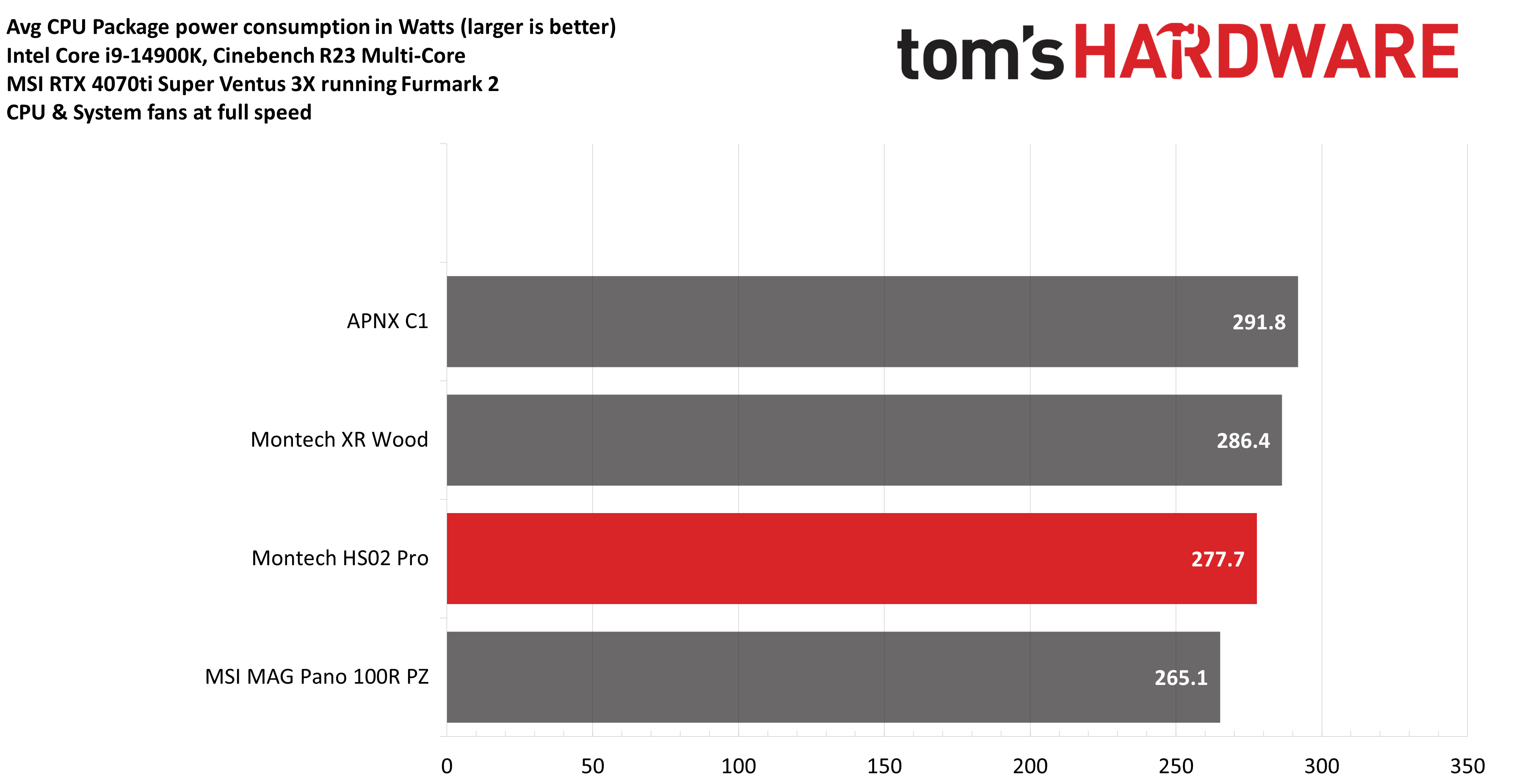
A reminder about how to improve performance
Just as a reminder: If you’re looking for stronger thermal performance than shown in the benchmarks above, the HS02 Pro supports additional fans at the top of the case. Users who are particularly concerned about CPU temperatures would be advised to install an AIO in this case for the best possible thermal performance.
Conclusion
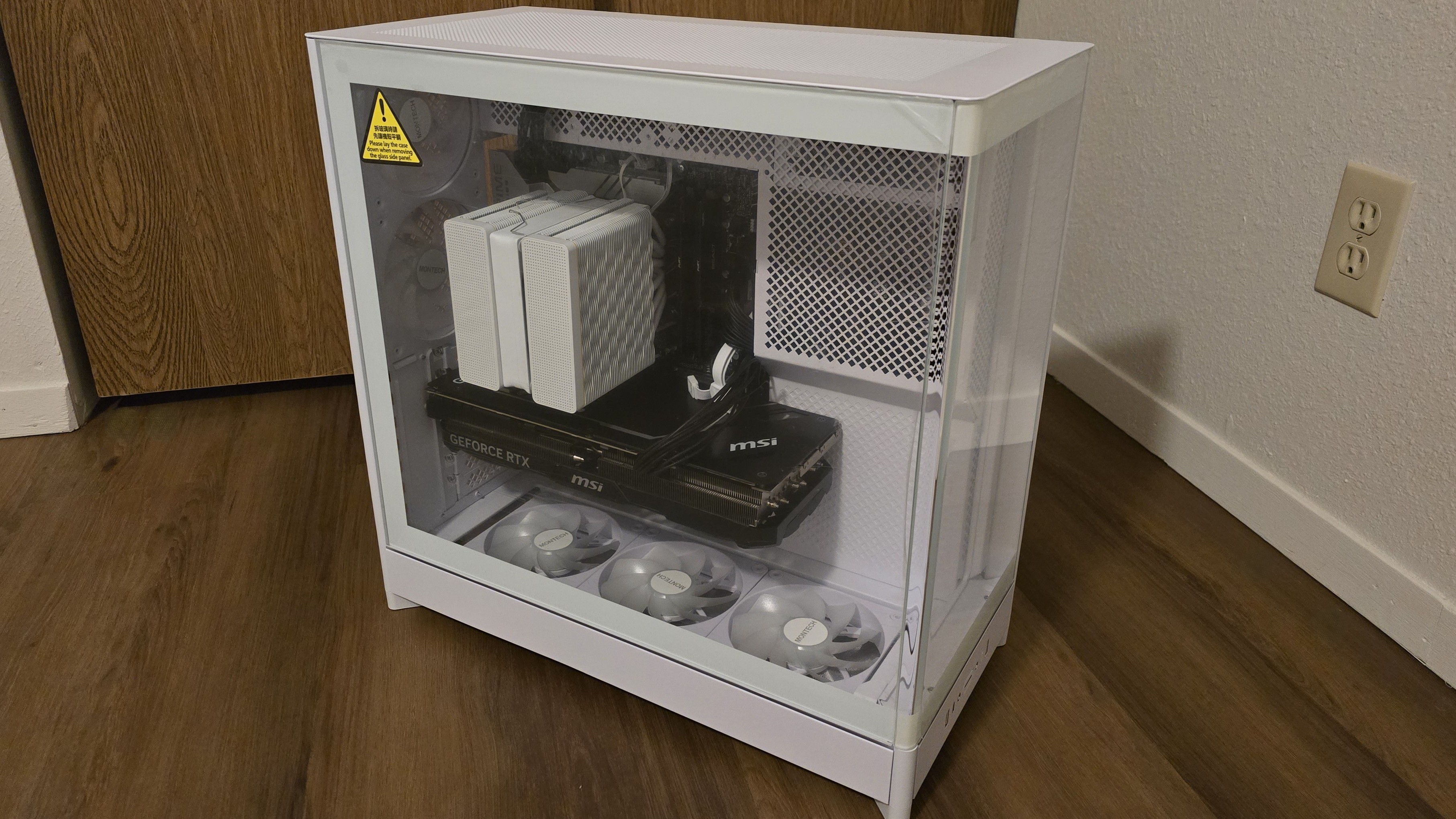
If you’re looking for the best possible GPU thermals, Montech’s HR02 Pro is the case you’re looking for. Its bottom intake and dual exhaust fans provide chart-topping graphics card temperatures, which also means a quieter-running GPU.

Albert Thomas is a contributor for Tom’s Hardware, primarily covering CPU cooling reviews.
-
thestryker I imagine using a top intake fan (maybe two depending on where it would fall in relation to cooler intake) would help the CPU thermals. Of course the viability would depend on the type of mesh used in the top and using an AIO would still likely be a better choice.Reply
I do like that the sacrifices they made do have a functional purpose of having a dual chamber type design without blowing up the width of the case. -
Albert.Thomas There are a lot of ways you could improve CPU thermal performance, but ultimately I think this is more than enough "power" for gamers using air coolers - and that most people using this case will probably use an AIO.Reply -
thestryker I just saw the only difference with the HS01 is a full mesh front panel that can have fans mounted. While it doesn't have the FOTM all glass going for it I'm sure cooling would be better with at least a couple of fans in the front.Reply -
Albert.Thomas Reply
I'll be looking at this case in the near future, as soon as bandwidth allows.thestryker said:I just saw the only difference with the HS01 is a full mesh front panel that can have fans mounted. While it doesn't have the FOTM all glass going for it I'm sure cooling would be better with at least a couple of fans in the front. -
milleron It looks as though there's no place to set a GPU support device, and the photos show none. I'd not dare to use a modern GPU without one. Are my eyes correct, or is there a way to provide external support to a horizontally mounted GPU?Reply -
thestryker Reply
There is no place to add a third party one, but if you read the description section of the article there's this heading which shows the holder that comes with the case:milleron said:It looks as though there's no place to set a GPU support device, and the photos show none. I'd not dare to use a modern GPU without one. Are my eyes correct, or is there a way to provide external support to a horizontally mounted GPU?
Side view, back-connect support, GPU holder
If you look at the picture in that section you can see the mounting holes along the left side below the perforated area where the PSU is mounted. -
Albert.Thomas Reply
I probably should have installed that in the case and showed it in the review, eh? I didn't bother installing it because I didn't feel my 4070ti Super really needs it.milleron said:It looks as though there's no place to set a GPU support device, and the photos show none. I'd not dare to use a modern GPU without one. Are my eyes correct, or is there a way to provide external support to a horizontally mounted GPU?
That said, there are mounting holes for the included GPU holder. You can see them in the bottom right corner of this photo.https://cdn.mos.cms.futurecdn.net/9XJQLBwh3WxoAzZpaGJwYN-1200-80.jpg.webp -
Mindstab Thrull To secure the screws holding a PCI-e device, you have to slide the screwdriver through the side of the case. When I tried using the reliable Linus Tech Tips screwdriver, it was extremely difficult to insert or remove a screw. A slim screwdriver available will make installation much easier.Reply
All I can hear in the back of my mind now is LTTSTORE.COM ... Damn it they got you too! :)
I forget which case it was - and whether it was LTT, JayzTwoCents, or GN that reviewed it (probably LTT in this case) - but I saw a very recent case review where the manufacturer had everything set up as intake apart from exhaust at the back. Apparently this was the best configuration for temperatures.thestryker said:I imagine using a top intake fan (maybe two depending on where it would fall in relation to cooler intake) would help the CPU thermals. Of course the viability would depend on the type of mesh used in the top and using an AIO would still likely be a better choice.
I do like that the sacrifices they made do have a functional purpose of having a dual chamber type design without blowing up the width of the case.
MOM, HANG UP THE PHONE! I'M ON THE MODEM!! :DAlbert.Thomas said:I'll be looking at this case in the near future, as soon as bandwidth allows.
So many cases I see these days that make me go "I want one of them" but I can only have so many PC's. I'm no Linus Sebastian, two (plus a laptop) is more than enough.
-- Mindstab Thrull
Nomming ur sanities since 1863 BSE (Before the Sarpadian Empires) -
Albert.Thomas Reply
I can be one of Linus Tech Tips' biggest critics at times, but the LTT Screwdriver is genuinely good. I'd recommend it to anyone!Mindstab Thrull said:All I can hear in the back of my mind now is LTTSTORE.COM ... Damn it they got you too! :)
